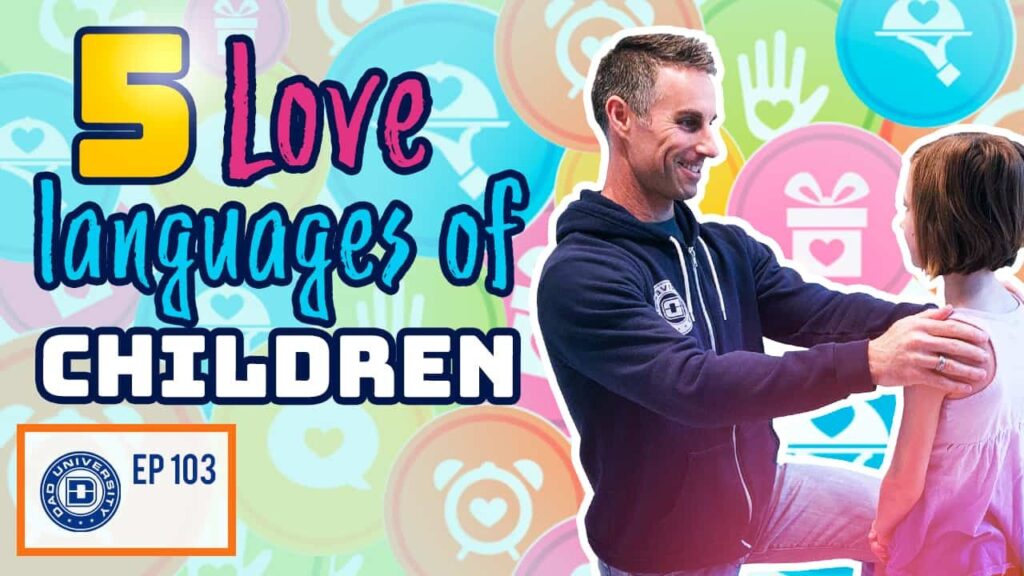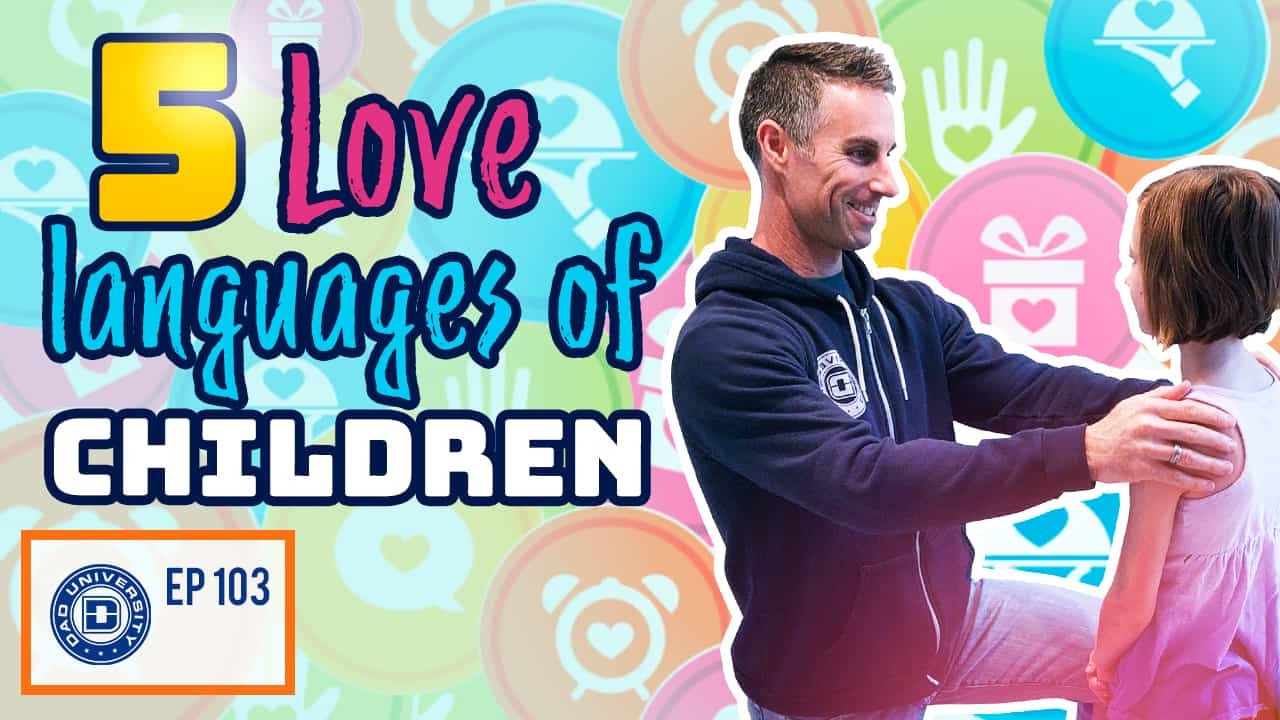
Unlocking Connection: Understanding the Love Languages for Kids
Understanding how children express and receive love is crucial for fostering healthy relationships and emotional well-being. Just like adults, children have different “love languages,” unique ways they feel most valued and appreciated. Discovering your child’s primary love language can significantly improve communication, strengthen your bond, and create a more loving and supportive environment. But what exactly are these love languages for kids, and how can you identify them?
This article delves into the concept of love languages for kids, exploring each language in detail and providing practical tips on how to speak them effectively. We’ll examine the five love languages – words of affirmation, acts of service, receiving gifts, quality time, and physical touch – and offer insights into recognizing which language resonates most with your child. By understanding and implementing these principles, you can nurture a deeper connection with your children and help them thrive emotionally.
The Five Love Languages: A Foundation for Connection
The concept of love languages was popularized by Gary Chapman in his book, “The 5 Love Languages: The Secret to Love That Lasts.” While initially focused on romantic relationships, the principles have been successfully adapted to parent-child dynamics. Understanding these love languages can provide a framework for building stronger, more meaningful relationships with your children.
Words of Affirmation
Children who resonate with words of affirmation thrive on verbal expressions of love and appreciation. These kids need to hear that they are loved, valued, and appreciated. Simple phrases like “I’m so proud of you,” “You’re doing a great job,” or “I love you” can have a profound impact. It’s not just about saying the words, but also about being sincere and specific in your praise. Instead of saying “Good job,” try “I’m so impressed with how hard you worked on that project!”
How to speak this love language:
- Offer sincere compliments and praise.
- Write notes of encouragement and love.
- Tell them why you are proud of them.
- Use positive and uplifting language.
- Avoid harsh criticism and negativity.
Acts of Service
For children whose primary love language is acts of service, actions speak louder than words. These kids feel loved when you do things for them, like helping with chores, making their favorite meal, or running errands. It’s about demonstrating your love through practical assistance and support. These acts don’t need to be grand gestures; even small, thoughtful actions can make a big difference.
How to speak this love language:
- Help with homework or projects.
- Prepare their favorite meal.
- Run errands for them.
- Help with chores around the house.
- Offer assistance without being asked.
Receiving Gifts
Children who feel loved through receiving gifts aren’t necessarily materialistic. For them, it’s the thought and effort behind the gift that matters most. The gift is a tangible symbol of your love and care. It doesn’t have to be expensive; a small, thoughtful gift can be just as meaningful as a large, extravagant one. The key is to choose gifts that reflect their interests and personality.
How to speak this love language:
- Give small, thoughtful gifts.
- Present gifts with a heartfelt message.
- Remember special occasions with gifts.
- Create a gift basket of their favorite things.
- Don’t just give gifts out of obligation; make them meaningful.
Quality Time
For children who value quality time, undivided attention is the ultimate expression of love. These kids need you to be present and engaged when you’re with them. It’s about putting away distractions, making eye contact, and actively listening to what they have to say. Quality time doesn’t necessarily mean spending hours together; even short bursts of focused attention can be incredibly meaningful. It’s about making them feel like they are your priority in that moment.
How to speak this love language:
- Schedule dedicated time for one-on-one activities.
- Put away distractions like phones and computers.
- Engage in activities they enjoy.
- Listen attentively to what they have to say.
- Make eye contact and show genuine interest.
Physical Touch
Children who thrive on physical touch feel loved through hugs, kisses, cuddles, and other forms of physical affection. These kids need to be touched and held to feel secure and loved. It’s important to respect their boundaries and preferences, but regular physical affection can be incredibly comforting and reassuring. A simple pat on the back, a high-five, or a cuddle on the couch can go a long way.
How to speak this love language:
- Give hugs and kisses.
- Hold their hand.
- Cuddle on the couch.
- Offer back rubs or head scratches.
- Engage in playful physical activities.
Identifying Your Child’s Love Language
Discovering your child’s primary love language requires observation, experimentation, and open communication. Here are some strategies to help you identify their preferred way of receiving love:
Observe Their Behavior
Pay attention to how your child expresses love to others. Do they frequently offer compliments, do acts of service, give gifts, crave quality time, or seek physical affection? Their behavior often reflects their own love language. For instance, a child who constantly hugs their siblings might have physical touch as their primary love language.
Listen to Their Requests
What do your children ask for most often? Do they frequently ask for your help with tasks, want to spend time with you, or ask for gifts? Their requests can provide valuable clues about their love language. A child who repeatedly asks for you to read them a story might be seeking quality time.
Experiment with Different Love Languages
Try speaking each of the five love languages to your child and observe their reaction. Which language seems to elicit the most positive response? Which language makes them feel the most loved and appreciated? You can also ask them directly which actions make them feel most loved. For example, try giving them a small gift one day, spending quality time with them the next, and offering words of affirmation the day after. See which one resonates the most.
Consider Their Age and Personality
A child’s love language can evolve over time as they grow and develop. What resonates with a toddler might not resonate with a teenager. Also, consider their personality. Introverted children might prefer quality time or acts of service, while extroverted children might thrive on words of affirmation or physical touch. Their individual personality plays a significant role in how they experience and express love.
Use Quizzes and Assessments
Several online quizzes and assessments are designed to help identify a child’s love language. These tools can be a helpful starting point, but it’s important to remember that they are not definitive. Use the results as a guide and continue to observe and communicate with your child to gain a deeper understanding of their needs.
Speaking Your Child’s Love Language Effectively
Once you’ve identified your child’s primary love language, the next step is to speak it effectively. This means being intentional and consistent in your efforts to express love in a way that resonates with them. Here are some tips for speaking each love language effectively:
Words of Affirmation
- Be specific and sincere in your praise.
- Focus on their efforts and accomplishments, not just the outcome.
- Write notes of encouragement and love.
- Use positive and uplifting language.
- Avoid harsh criticism and negativity.
Acts of Service
- Offer help without being asked.
- Do things that they appreciate, even if they don’t ask for it.
- Be reliable and follow through on your promises.
- Involve them in the process when possible.
- Show genuine care and concern.
Receiving Gifts
- Choose gifts that reflect their interests and personality.
- Present gifts with a heartfelt message.
- Remember special occasions with gifts.
- Don’t just give gifts out of obligation; make them meaningful.
- Teach them the value of gratitude and appreciation.
Quality Time
- Give them your undivided attention.
- Put away distractions and be fully present.
- Engage in activities they enjoy.
- Listen attentively to what they have to say.
- Make them feel like they are your priority.
Physical Touch
- Be respectful of their boundaries and preferences.
- Offer physical affection regularly, but not excessively.
- Make physical touch a positive and comforting experience.
- Be mindful of their personal space.
- Use physical touch to communicate love, support, and encouragement.
The Importance of Speaking Multiple Love Languages
While identifying your child’s primary love language is important, it’s also beneficial to speak multiple love languages. Children, like adults, appreciate receiving love in various ways. By speaking different love languages, you can create a more well-rounded and fulfilling relationship with your child. It is important to remember that love languages for kids are not static. They evolve as your child grows.
Additionally, understanding your own love language can help you better understand how you express love and how you can meet your child’s needs more effectively. By recognizing your own preferences and biases, you can consciously make an effort to speak your child’s love language, even if it’s different from your own. [See also: How to Build Strong Family Relationships]
Potential Challenges and How to Overcome Them
Identifying and speaking your child’s love language isn’t always easy. Here are some potential challenges and how to overcome them:
- Conflicting Love Languages: If you and your child have different love languages, it can be challenging to connect. The key is to be aware of these differences and make a conscious effort to speak each other’s language.
- Time Constraints: Finding the time to speak your child’s love language can be difficult, especially with busy schedules. Prioritize spending quality time with your child, even if it’s just for a few minutes each day.
- Resistance to Change: Your child may resist your efforts to speak their love language if they are not used to it. Be patient and persistent, and they will eventually come to appreciate your efforts.
- Misinterpreting Behavior: It’s easy to misinterpret a child’s behavior and assume that they are seeking something different than what they truly need. Observe their actions carefully and communicate with them openly to avoid misunderstandings.
Conclusion: Nurturing a Loving Connection Through Love Languages
Understanding the love languages for kids is a powerful tool for fostering healthy relationships and emotional well-being. By identifying your child’s primary love language and speaking it effectively, you can create a deeper connection, improve communication, and nurture a more loving and supportive environment. Remember that it takes time, patience, and effort to truly understand your child’s needs and preferences. But the rewards of a stronger, more meaningful relationship are well worth the investment. By embracing the principles of love languages, you can unlock the potential for a more loving and fulfilling relationship with your child and help them thrive emotionally. Discovering and speaking the love language of your kids is an investment in their emotional well-being and your relationship with them. Make the effort to understand how your child experiences love, and you’ll be rewarded with a stronger, more fulfilling connection.

